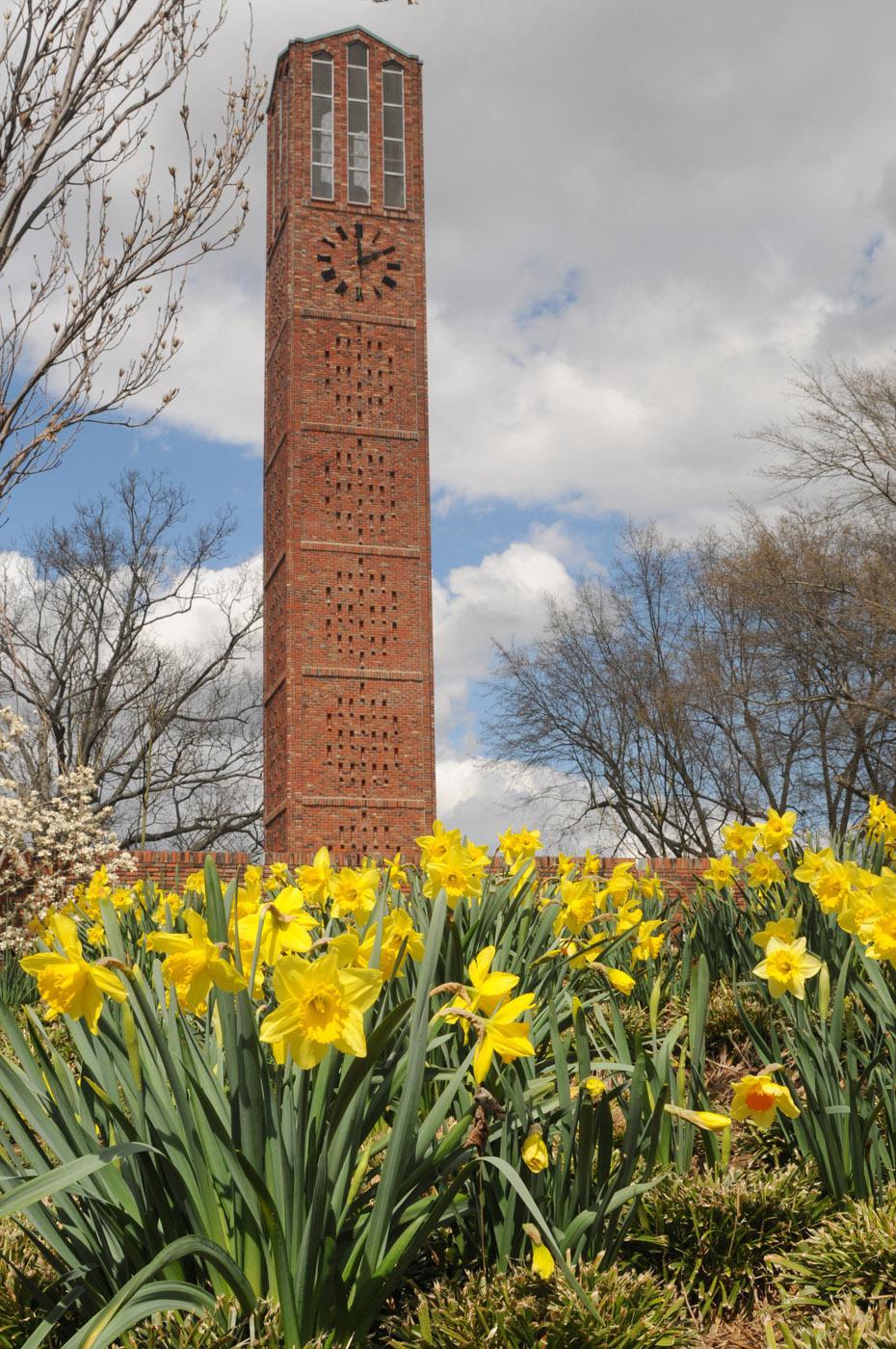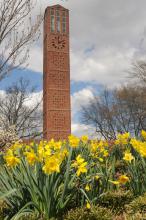Information Possibly Outdated
The information presented on this page was originally released on April 8, 2010. It may not be outdated, but please search our site for more current information. If you plan to quote or reference this information in a publication, please check with the Extension specialist or author before proceeding.
MSU's daffodils put spring in plain view
By Patti Drapala
MSU Ag Communications
MISSISSIPPI STATE –Many plants contribute to the beauty of Mississippi State University’s landscape, but no sight is more universally welcomed on campus than the daffodils bursting into bloom once a year.
“Daffodils are the harbingers of spring,” said Lelia Kelly, consumer horticulturist with MSU’s Extension Service. “After a long winter without much color, people enjoy the bright, yellow flowers that signal the appearance of even more flowers as plants establish and mature.”
Daffodil is the common English term for narcissus, the botanical name for a genus of hardy, spring-flowering bulbs. They also are called jonquils in much of the South to indicate the particular tone of yellow that some varieties exhibit. The ease of growing these flowers is what makes them a favorite of many gardeners and landscape maintenance experts throughout Mississippi.
MSU’s Campus Landscape is responsible for planting and maintaining the daffodil beds scattered across the landscape. Most of the bulbs are a gift from Van Zyverden, a company specializing in production and distribution of different types of flowering bulbs. The Meridian-based company sends many varieties, such as King Alfred, Ice Follies and Red Devon, to MSU each year.
“We have received an annual donation of daffodil bulbs from Van Zyverden since the early 1990s,” said Rob Rice, interim head of MSU Campus Landscape. “The bulbs are a donation that keeps giving back because they multiply and provide even more blooms each succeeding year.”
Landscape workers plant the new donations in groundcover and mulched areas in late November, which is near the end of the season for planting blubs. Workers also check and mulch established beds as needed. In spring, they remove old blooms as they wither.
““Planting the daffodil bulbs is labor intensive, but most other maintenance operations are concluding in late fall, which means we can devote time to this task and complete it on time,” Rice said.
As the flowers bloom each spring, MSU students, staff and visitors enjoy the beauty and celebrate the longstanding tradition of daffodils on campus. And, many home gardens, yards and public areas across the state reflect this tradition, too.
Gardeners can avoid problems if they follow MSU’s lead by establishing beds in areas where soil drains well, Kelly said.
There is another underlying reason why daffodils are easy to maintain and perhaps become more prolific at MSU with every passing season. This information applies to home gardening, too.
“Squirrels and other critters do not dig and eat daffodil bulbs like they do some of our other spring bulbs,” Kelly said. “That’s a tremendous bonus for any garden, whether it is located at MSU or in the backyard at home.”
Contact: Rob Rice, (662) 325-1541








